?width=768&height=1024)
FERRARI F430
The F430 hails the arrival of a whole new generation of Ferrari V8-engined berlinettas. Every inch of the car was inspired by the engineering research carried out at Ferrari’s Gestione Sportiva F1 Racing Division. The result is a highly innovative design characterised by cutting-edge technologies perfected for use on a road-going car.

race-derived dimensions
The F430′s line, created by Pininfarina in collaboration with Ferrari’s Head of Design, is inspired by the car’s exceptional engineering. Each and every styling cue highlights the aggression and performance of a thoroughbred Ferrari yet respects the functional demands of this kind of car.
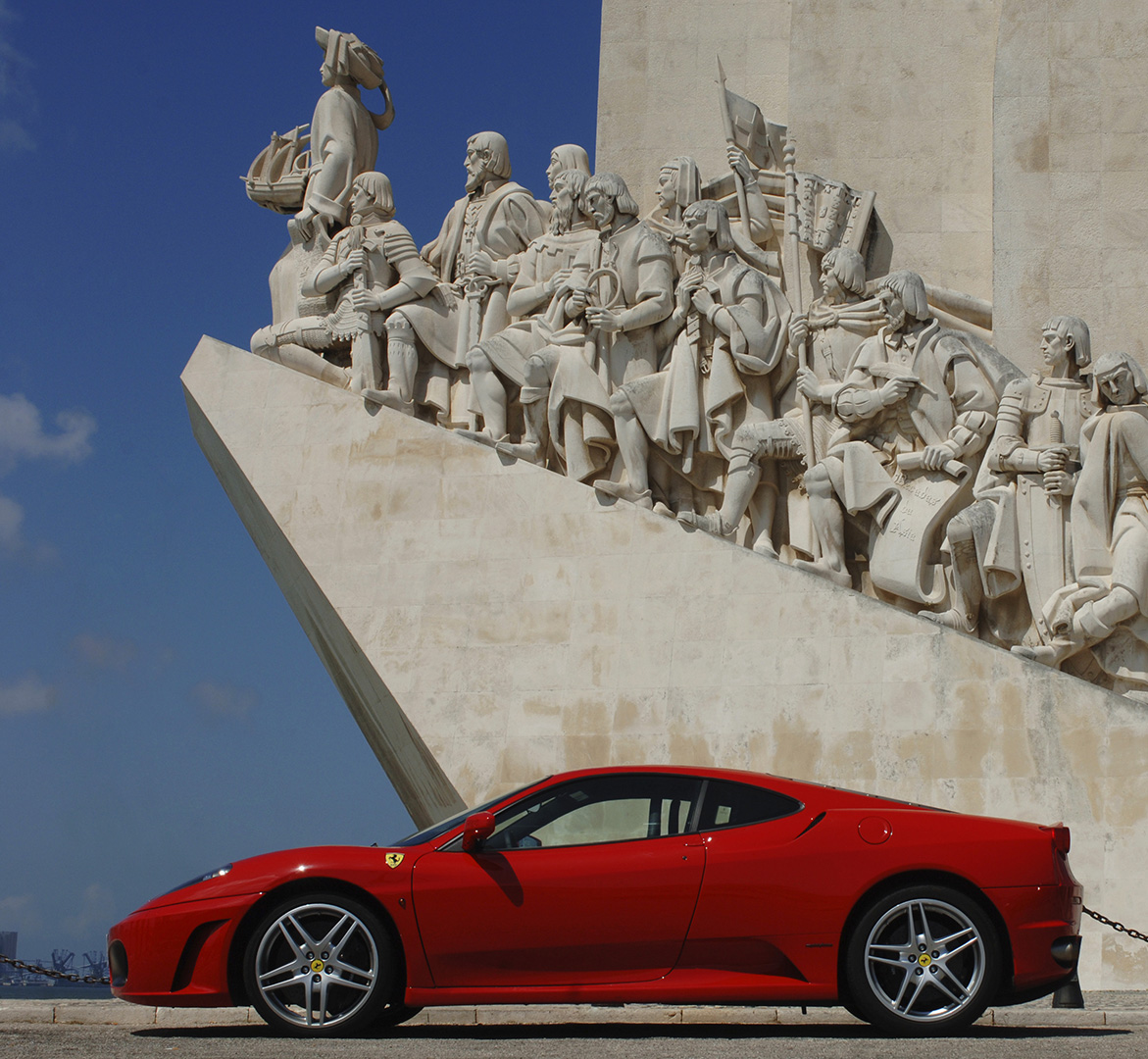
In design terms, little has been carried over from the outgoing 360 Modena with the result that the new berlinetta has an even stronger personality and more muscular stance. The F430′s nose is characterised by two distinctive air intakes that channel air into generously dimensioned radiators that cool the powerful engine. Their shape draws inspiration from the Ferrari 156 F1 that Phil Hill drove to his F1 World Championship title in 1961. The two intakes are linked at their lower edge by a spoiler that directs the air towards the car’s flat underbody. The F430′s vertically stacked headlights are extremely compact thanks to the use of Bi-xenon technology.
When the lights are on, the unique shape of the side light, which is incorporated into the outer edge of the headlight,emphasises the profile, making the car immediately recognisable even at night. Large air vents just ahead of the front wheels channel the air out of the radiators and along the car’s flanks. Generous scoops at the top of the rear wheelarches channel air into the engine.
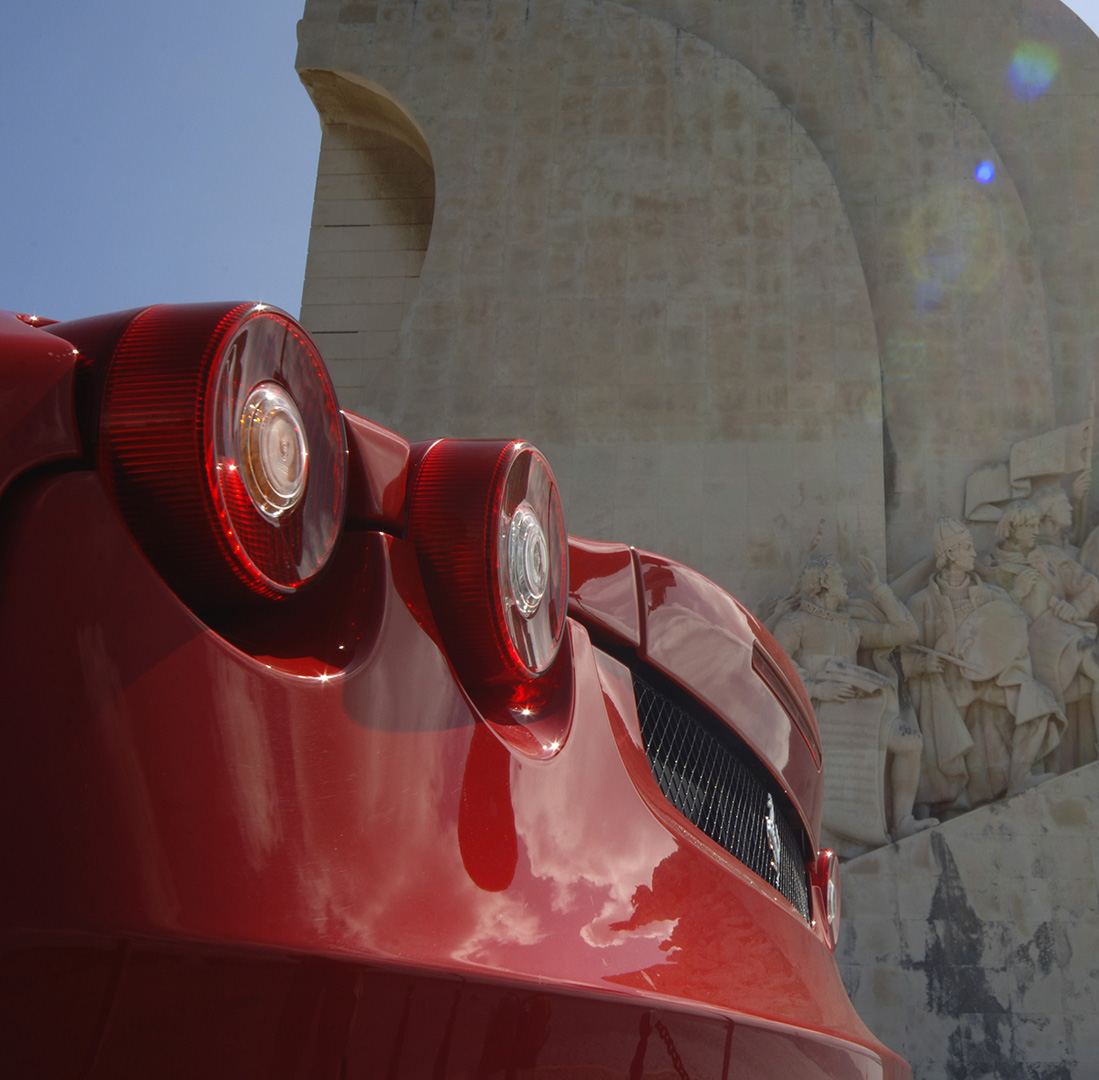
The side view is completed by the new 19″ wheels with 5 twinspoke layout that combine classic Ferrari design flair with exceptional levels of structural rigidity combined with light weight. The Enzo Ferrari was the inspiration for much of the rear styling of the new F430. The type and arrangement of the lights are the same with the latter protruding quite prominently from the bodywork. Another similarity is the shape of the air vent for the engine with the chrome Prancing Horse at its centre.
The Ferrari’s meticulous aerodynamic detailing is also reflected in the design of the nolder incorporated in the engine cover and the new rear diffuser integrated into the bumper which boasts race-derived dimensions. The F430′s extreme performance pretensions are further underlined by such styling details as the new exhausts with stainless steel ball-polished exhaust tailpipes.
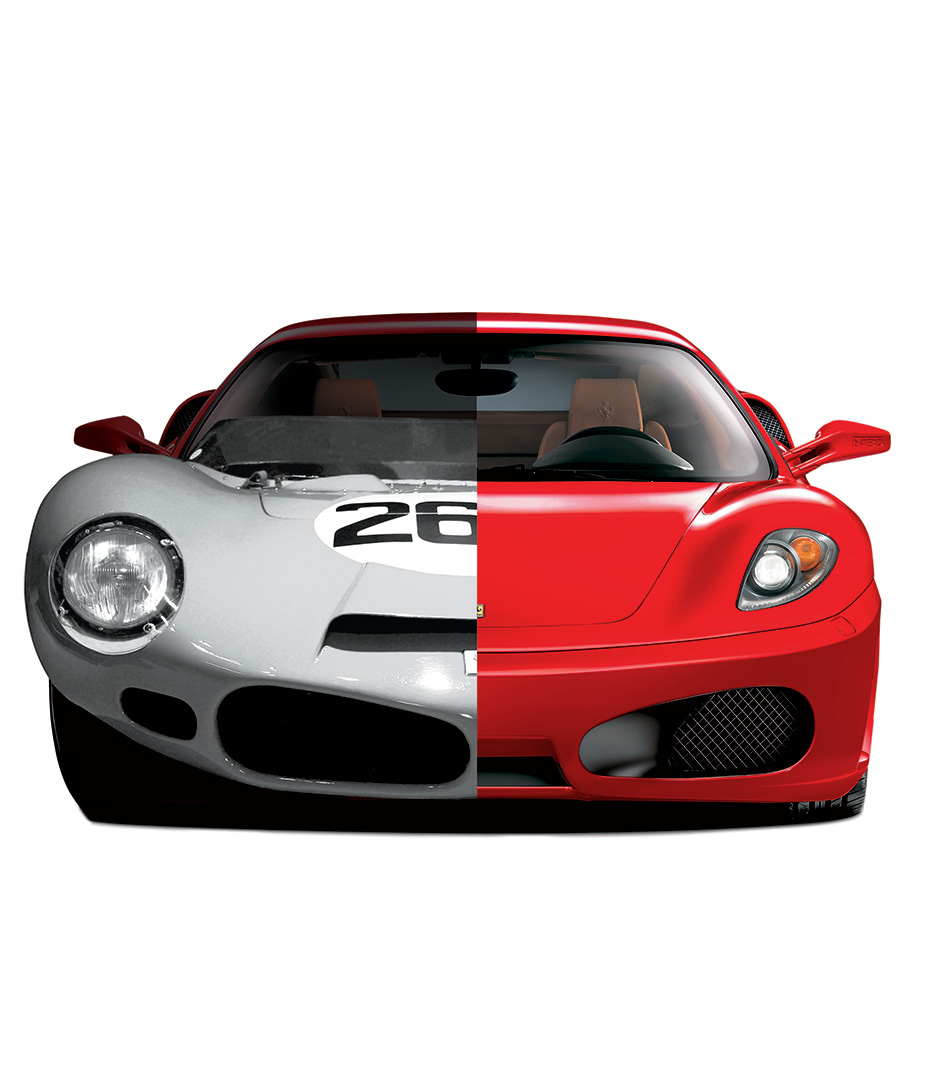
The F430′s interior has been redesigned for improved driver ergonomics. The instruments are housed in a new binnacle, and this design together with the layout of the dashboard underlines the care that has gone into grouping all the major controls in front of the driver within easy reach.
In the driver’s direct line of sight are the rev counter, which features new graphics with a choice of either a red or yellow background and a new metal surround, the digital readout of the gear ratio selected (F1 version) and a multi-function display. The same uncompromising approach to driver control was the inspiration behind mounting the starter button and manettino on the steering wheel.
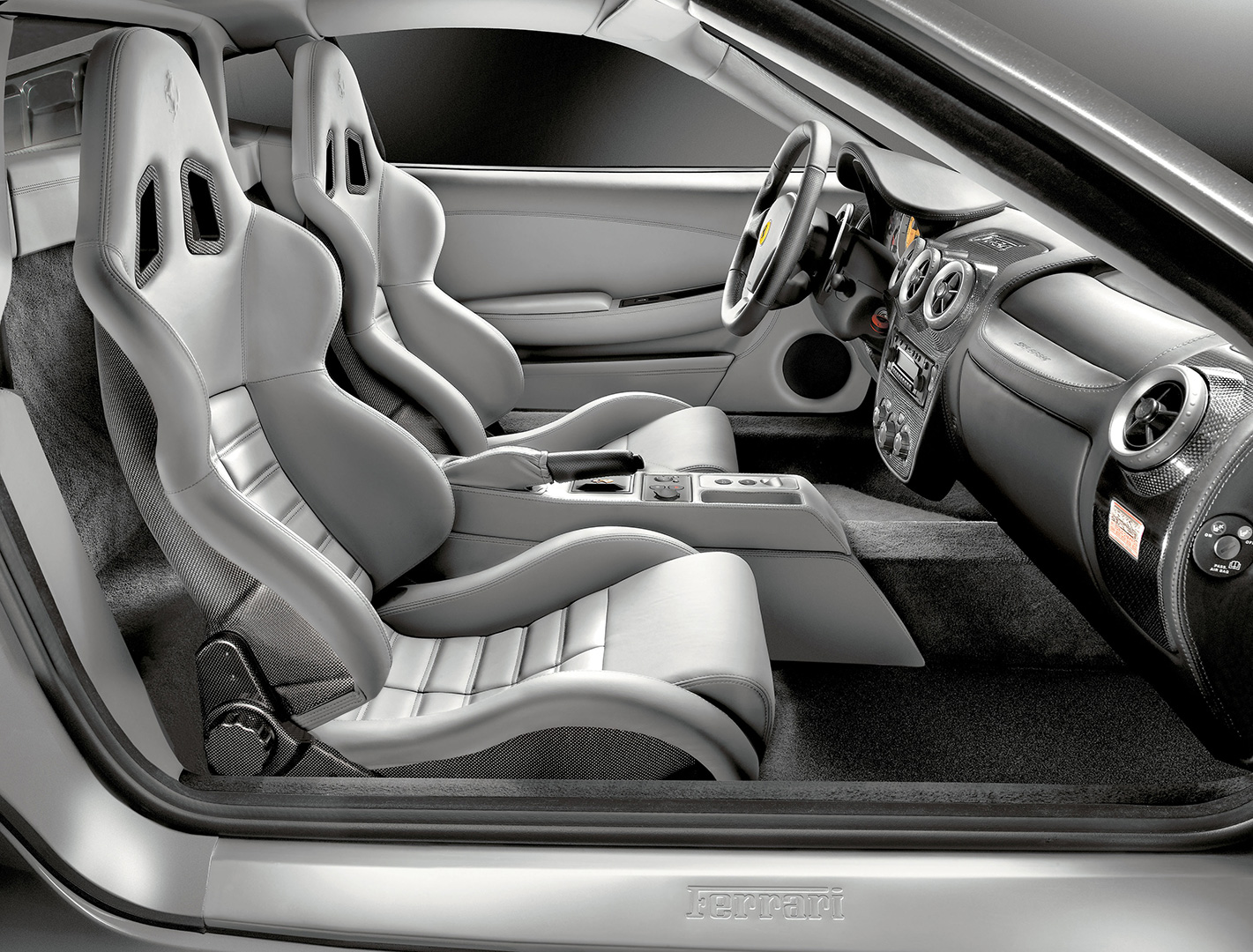
The wheel itself is new with the upper rim flattened to improve visibility in the straight ahead position, and the horn pushes are integrated into the inner rim where they can be easily actioned. The interior reflects the advanced technology and materials employed in the car’s construction, and can be personalised with carbon-fibre or aluminium inserts.
The cockpit is noticeably bigger and the already excellent passenger comfort is subsequently increased thanks to a slimmer central tunnel which houses the gear lever turret on the manual version and the F1 console on the paddle-shift version.
There is plenty of space behind the rear seats, with a new electrically operated compartment for oddments storage and catch netting to the rear fire wall. The seats have been redesigned for greater lateral containment and the standard electric seats can be substituted by more sporting items with four-point harnesses to order (depending on markets).
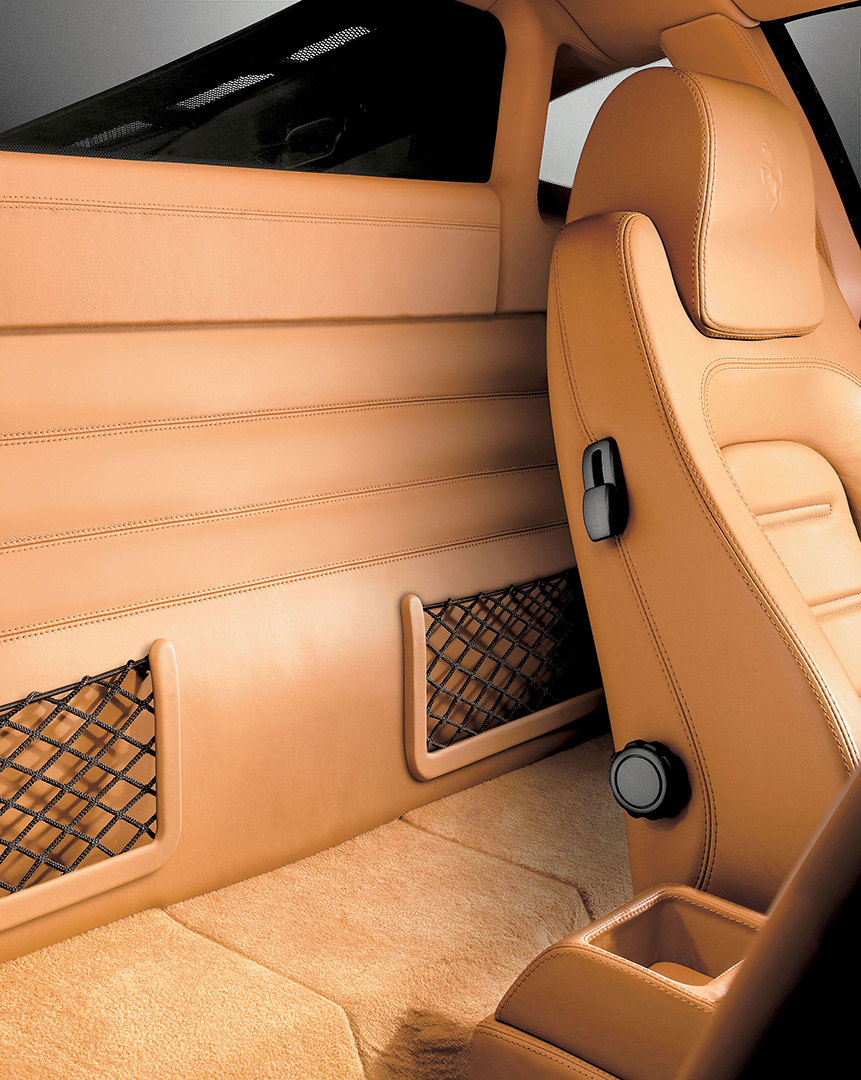

AIR FLOW MODULATION
Traditionally, Ferrari has clothed its mechanical package in forms that are dictated by the need for maximum aerodynamic efficiency. In the case of the F430, this principle has been developed to the extreme, employing exactly the same engineering approach to computer development models and wind tunnel testing as used by the F1 team.In this way, Ferrari’s engineers have been able to modulate the air flow both around the car, as well as under it, to perfection.

The result is a highly efficient configuration that channels air flow for maximum downforce and thus grip. Similarly air is channelled to the engine to both increase power as well as optimise cooling of transmission and brakes even under the heaviest use. Perfecting the Ferrari F430′s aerodynamics has brought about a 50 percent increase in downforce compared to the 360 Modena, thus increasing high-speed stability and the car’s active safety. At 200 km/h, that figure equates to 45 kg more downforce than the 360 Modena and this becomes 85 kg at 300 km/h, amounting to a total of 280 kg.
The significant progress made in the car’s aerodynamics is also reflected in the improvement of the ratio between the coefficient of downforce (Cl) and the drag coefficient (Cd) with a 40 percent improvement over the 360 Modena. This excellent result was in part achieved by including a new spoiler at the bottom of the front bumper where it cleaves ‘clean’ air, i.e. that still undisturbed by the turbulence generated around the body of the vehicle. Lengthy development of the shape and the angle of attack of the spoiler resulted in an impressive increase in downforce over the front axle – up to 130 kg – which contributes in no uncertain manner to longitudinal vehicle stability and steering precision.
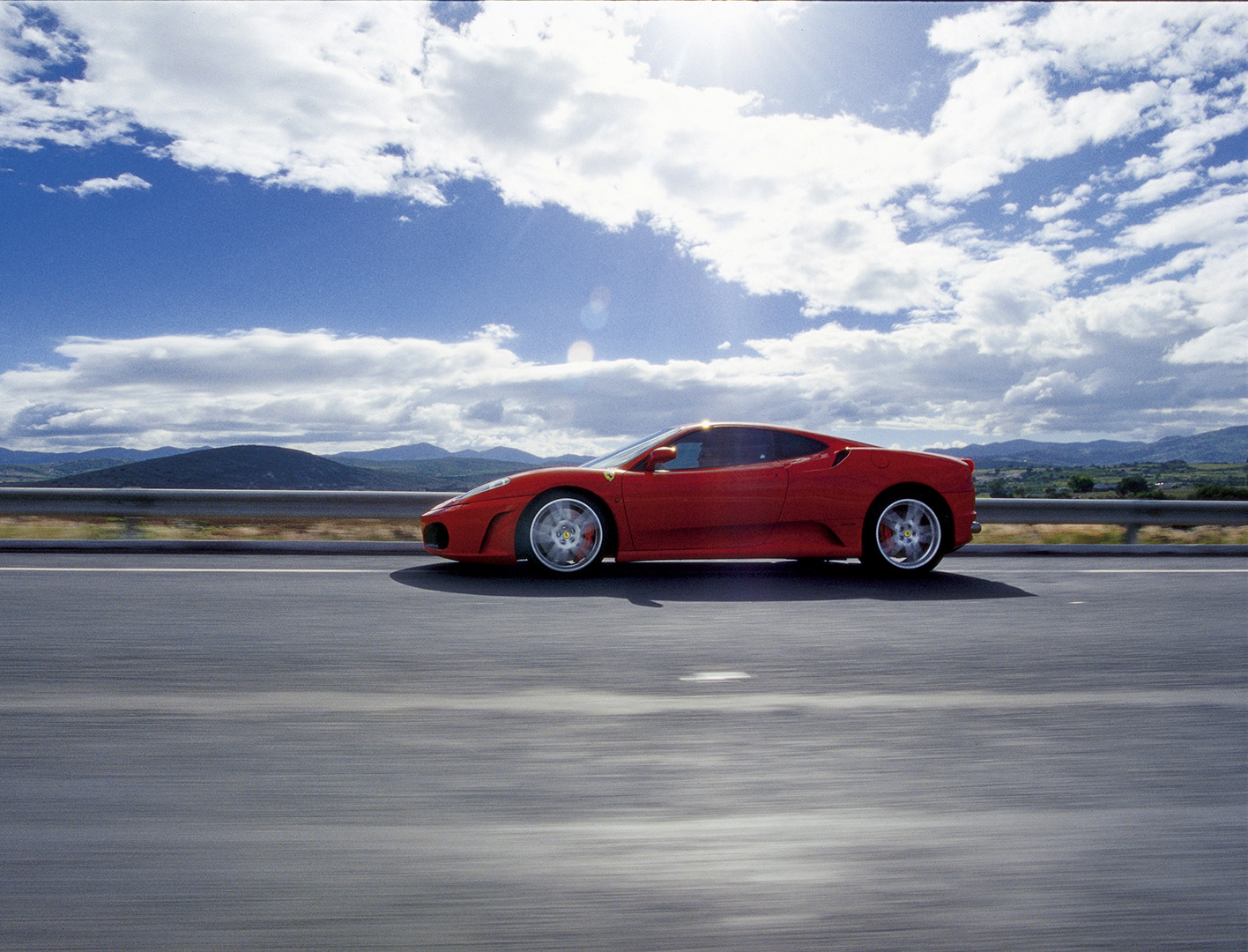

a new 90° V8
The F430 is powered by a new 90° V8 featuring Ferrari’s traditionally uncompromising design approach with a flat-plane crank (180° between throws). This is an all-new unit that does not share any components with the 360 Modena’s engine. The improvement in terms of performance, weight and reduction of overall dimensions is the result of applying Ferrari’s wealth of F1 experience to its road cars. Despite a 20% increase in engine displacement (from 3,586 cc to 4,308 cc), engine weight has grown minimally by just 4 kg, while perform-ance is considerably improved across the board. Torque increases by 25% (465 Nm at 5,250 rpm, 80% of which is already available at 3,500 rpm) and power by 23% (490 hp at 8,500 rpm).
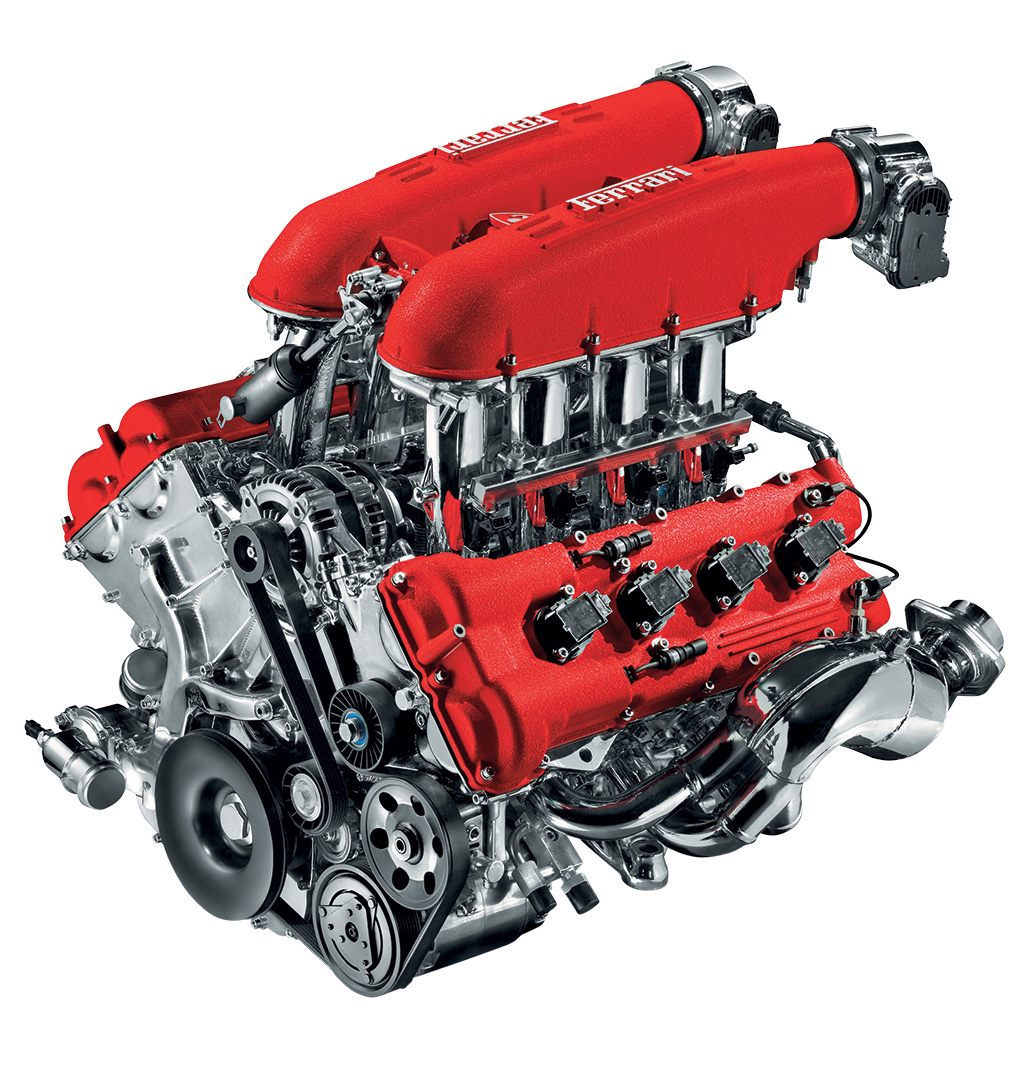
The engine is extremely compact with a cylinder spacing of just 104 mm. Similarly, Ferrari’s engineers integrated the sump and main bearings in a single casting which, along with a smaller-diameter twin-plate clutch and flywheel, has reduced the engine height between the bottom of the oil sump and the crankshaft to just 130 mm (from 145 mm on the 360 Modena power unit).
In line with the latest developments in high specific output engines, there are new 4-valve cylinder heads,and the inlet tracts and valve diameters are derived directly from designs used on the F1 engines. Support from the company’s Gestione Sportiva racing side was essential in defining performance characteristics. The twin overhead camshafts per cylinder bank feature continuously variable timing on both inlet and exhaust cams, and the valve gear is driven by hydraulic tappets.
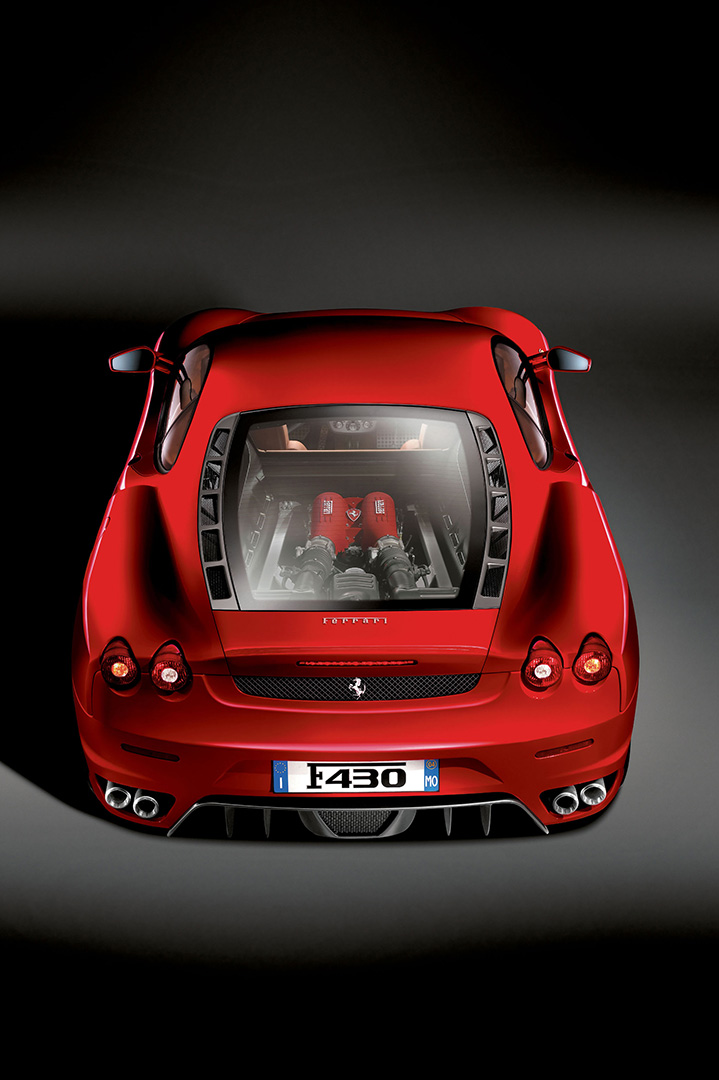
Actuation of the variable valve timing is guaranteed by a high pressure hydraulic system (20 bar), obtained by using a supplementary pump, an external accumulator and a circuit that works in parallel with the oil circuit for the hydraulic tappets. This ensures that a full timing cycle is completed in 0.1 seconds.
Ferrari has dropped the mixed gear/toothed belt distribution system for a chain-driven system, thus reducing the overall length of the engine. Crankshaft, con rods and pistons are also all-new. The dry sump lubrication system comprises a series of external pumps (thus reducing the overall height of the sump) and a circuit that has been optimised by eliminating the oil radiator and introducing a water/oil heat exchanger mounted inside the engine vee. Three scavenge pumps guarantee that excess oil is drawn out of the bottom of the cylinder block under all driving conditions, creating a strong vacuum around the crankshaft and thus reducing power loss through attrition. The intake manifold features straight inlet tracts to the two central plenums which, in turn, have trumpets individually cast at the top of the tracts for each cylinder to ensure optimum air flow to the cylinder heads.
A rotating drum – actuated pneumatically by the engine control unit – compensates for variations in the effective volume inside the two plenums to optimise the intake resonance characteristics and therefore maximise the torque curve throughout the rev range. The performance targets set were achieved also thanks to unrestricted intake and exhaust ducts for optimum gas flow efficiency and the high compression ratio (11.3:1). The painstaking care taken over optimising internal fluid dynamics and combustion efficiency has ensured a high specific power output despite conforming to the latest Euro 4 and LEV2 emissions standards. Engine management is via two electronic Bosch Motronic ME7 control units with twin motorised throttles, single coils and active anti-knocking control throughout the entire rev range.


RACING HERITAGE
The F430 driver can change the set-up of his car using the innovative selector mounted on the steering wheel.
Just like in Formula 1, the F430 driver can change various areas of the set-up of his car using a single selector set on the steering wheel. The manettino, as it is called by Scuderia Ferrari drivers, is a commutator switch that has been adopted directly from racing and allows the driver maximum efficiency and speed in controlling the car’s various functions.

The engine is extremely compact with a cylinder spacing of just 104 mm. Similarly, Ferrari’s engineers integrated the sump and main bearings in a single casting which, along with a smaller-diameter twin-plate clutch and flywheel, has reduced the engine height between the bottom of the oil sump and the crankshaft to just 130 mm (from 145 mm on the 360 Modena power unit).
In line with the latest developments in high specific output engines, there are new 4-valve cylinder heads,and the inlet tracts and valve diameters are derived directly from designs used on the F1 engines. Support from the company’s Gestione Sportiva racing side was essential in defining performance characteristics. The twin overhead camshafts per cylinder bank feature continuously variable timing on both inlet and exhaust cams, and the valve gear is driven by hydraulic tappets.

The engine’s flat-plane crank (with 180° between throws) epitomises Ferrari’s uncompromising design approach. Eight-cylinder engines with a 90 degree angle between their cylinder banks are a relatively recent addition to Ferrari history. Apart from the engine sported by the 1956 World Championship-wining F1 car, which Ferrari inherited from Lancia after the latter pulled out competition, and the one mounted to the 248 sports prototype in the early 1960s, it was 1973 before a Ferrari would be powered by an engine with this specific architecture.
Characteristically flat-plane crankshaft engines have a crankshaft with crankpins angled at 180 degrees to each other or “flat” i.e. on the same plane. Generally speaking V8 engines have a 90 degree angle between the cylinder banks with each crank pin offset at 90 degrees from the adjacent ones i.e. they are “crossed” at 90 degrees. Hence the cross-plane name. Whether a flat or cross-plane crankshaft is chosen depends on what kind of performance is required. To get maximum performance from the engine, the flat-plane must be used but for all-round functioning the cross-plane is best. This why all Ferrari V8s engines (from the 308 to the 328, the 348 to the 355,the 360 to the 430,and the special high performance GTO series, the F40 and the recent California, our first front V8) use a flat-plane crankshaft.

One of the technical features that sets the F430 apart is the E-Diff, or electronic differential.
This solution has been used for years in F1 single-seaters and has been continuously developed and refined, effectively transferring massive torque levels to the track under extremely high cornering g-forces. The E-Diff is now standard equipment on the F430 – the first time that a production car has been equipped with such a sophisticated system for high-performance roadholding. On the track, the E-Diff guarantees maximum grip out of bends, eliminating wheel spin.

- V8ENGINE
- 262.9 cu inTOTAL DISPLACEMENT
- 490 CVMAXIMUM POWER @ 8500 RPM
- >196 mphTop speed
- Overall length177.6in
- Overall width75.7in
- Height47.8in
- Wheelbase102.4in
- Front track65.7in
- Rear track63.6in
- Front overhang43.3in
- Rear overhang32.0in
- Dry weight2975 lb*
- Kerb weight3196 lb*
- Boot (trunk) capacity9 cu ft
- Fuel tank capacity21 UK gal (25 US gal)
- Weight distribution43%/57% front/rear
- Type90° V8
- Bore/stroke3.62 x 3.19in
- Unit displacement32.9 cuin
- Total displacement262.9 cuin
- Compression ratio11.3:1
- Maximum power360.3 kW (490 CV) at 8500 rpm
- Maximum torque465 Nm (343 lbft) at 5250 rpm
- Specific power114 CV/I
- Dry weight/power6.1 lb/CV
- Transmission and gearboxManual or F1
- Electronic controlsElectronic differential (E-DIFF)
- Electronic controlsControl for Stability and Traction (CST)
- Front225/35 ZR 19”
- Rear225/35 ZR 19”
- Maximum speedover 196 mph
- 0-100 km/h (0-62 mph)4.00s
- Manual gearbox: 0-400 m12.00s
- Manual gearbox: 0-1000 m21.65s
- F1 gearbox: 0-400 m11.95s
- F1 gearbox: 0-1000 m21.60s
- Combined15.2 l/100km
- Combined345g/km
- *European market version
- **Note for all models’ technical specifications Engine power is expressed in kW, in accordance with the International System of Units (SI) and in CV for reasons of homogeneity. The horse power (hp) can be calculated as follows: 1 kW=1.34 hp
- design
- aerodynamics
- engine
- Vehicle Dynamics
- Technical Details
- Media gallery